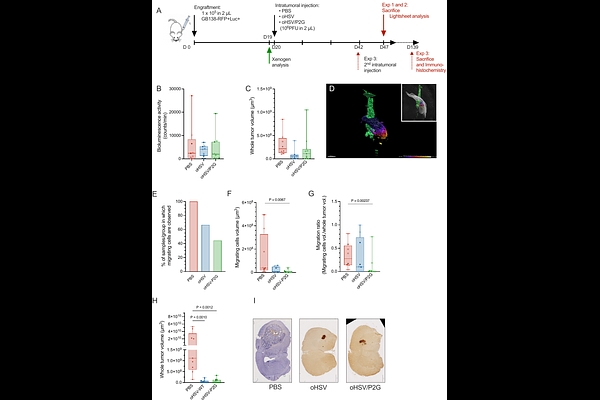An oncolytic herpesvirus expressing a CXCR4 antagonist interferes with Glioblastoma cells stemness features and migration.

An oncolytic herpesvirus expressing a CXCR4 antagonist interferes with Glioblastoma cells stemness features and migration.
D'ARRIGO, P.; DUBOIS, M.; SANCHEZ GIL, J.; LASSENCE, C.; BROUWERS, B.; LOMBARD, A.; ROGISTER, B.; NEIRINCKX, V.; LEBRUN, M.; SADZOT-DELVAUX, C.
AbstractGlioblastoma is one of the most aggressive brain tumors. Despite the standard therapy, the survival from diagnosis remains dramatically low, especially due to relapses. Considering their capacity to escape the tumor and to migrate to the subventricular zone through a CXCR4-dependant mechanism, Glioblastoma stem-like cells (GSCs) are considered as responsible for these relapses. CXCR4 regulates biological features associated with tumor progression, including self-renewal, migration and radio-resistance. Importantly, its expression correlates with severity and poor prognosis of several cancers including GBM. CXCR4/CXCL12 pathway appears therefore as an interesting potential therapeutic target. We have generated an oncolytic herpesvirus (oHSV) expressing HA-P2G, a mutated form of CXCL12 previously described as a CXCR4 competitive inhibitor. We demonstrate that in vitro, oHSV/P2G impairs human primary GSCs stemness markers expression, self-renewal and migration. In an orthotopic xenograft murine model, its injection within the tumor limits tumor growth and GSCs migration. The ability of P2G to interfere with major GSC features demonstrates the interest in considering oHSV/P2G as a promising new therapeutic approach for glioblastoma patients.